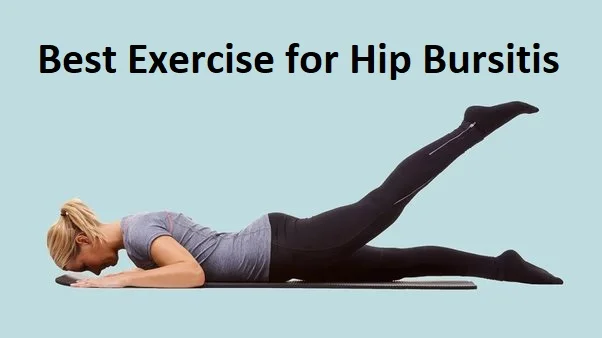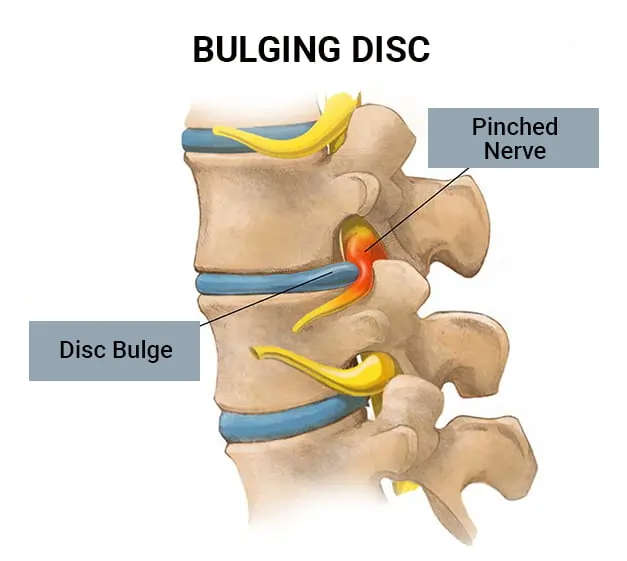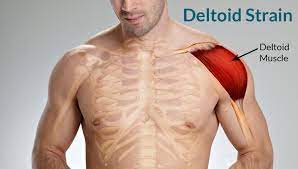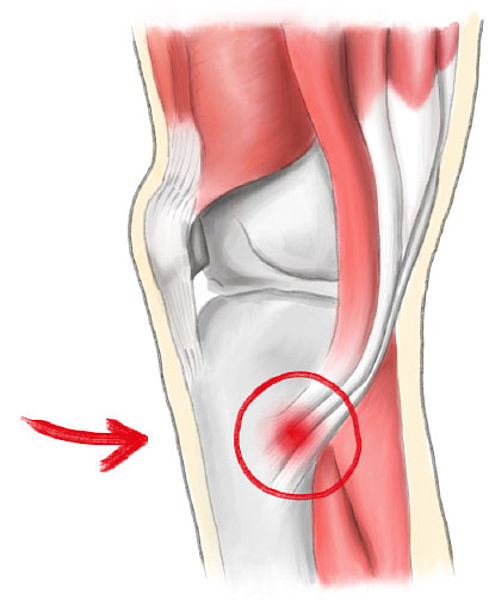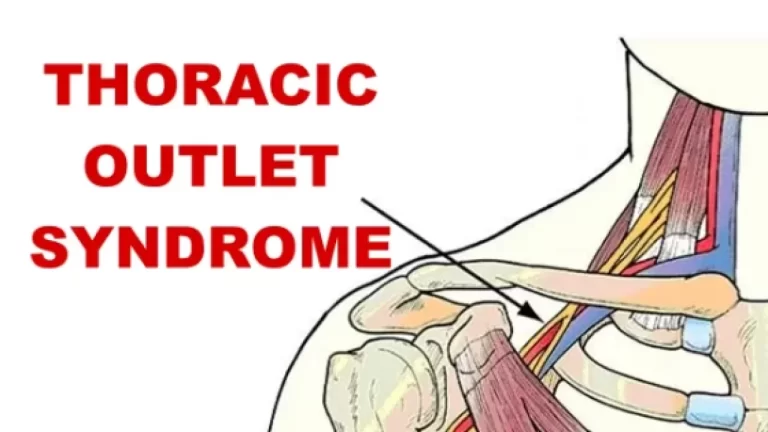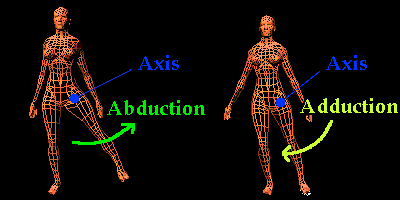8 Best Exercises for Hip Bursitis
Exercise for Hip Bursitis: While rest and medical treatment may be necessary to manage hip bursitis, exercise can also play a crucial role in the recovery process. Appropriate exercises can help strengthen the muscles surrounding the hip joint, improve flexibility, and promote healing.
Table of Contents
Introduction
Hip Bursitis is defined as the inflammation of the bursa of the hip joint. There are two major bursae in the hip that are typically irritated and inflamed during this condition. The first bursa of the hip joint protects the bony point of the hip bone called the greater trochanter. Inflammation of the trochanter bursa is called trochanteric bursitis which affects the greater trochanter.
Another bursa — the name iliopsoas bursa is situated on the inside (groin side) of the hip. When this bursa turns out into inflammation, the condition is also sometimes considered to as hip bursitis, but the pain is present in the groin area of the hip.
Symptoms
symptom of trochanteric bursitis is pain at the point of the hip, pain is worst at night in the hip joint
The pain may get severe with prolonged walking, stair climbing, or squatting such as activity
Sharp pain, and swelling around the affected area
Warmth to the touch
Limited movement of the hip
Tenderness and hip joint pain
Pain after sitting for too long
Limited movement and weakened muscles
Causes of Hip Bursitis
Repetitive stress (overuse) injury. …
Hip injury. …
Spine disease. …
Leg-length inequality. …
Rheumatoid arthritis. …
Previous surgery. …
Bone spurs or calcium deposits…
Risk factors for this condition
- Repetitive stress on the hip or injury of the hip: Included activities such as running, cycling, and standing for long hours.
- Hip Bruise: A direct trauma to the hip may reason to hip bursitis
- Spine disorder: Conditions such as arthritis of the lumbar spine, scoliosis
- Rheumatoid arthritis is also a reason for the development of this condition
- Previous surgical procedures around the hip
- Bone spurs or calcium deposits
Best Exercise for hip bursitis
Glute Bridges
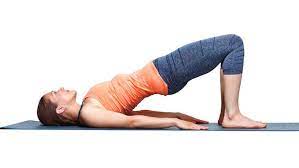
Glute bridges are great exercises for hip bursitis as they will provide strength to your hip joints by considering particular muscles such as the quadriceps, hamstrings, glutes, and hip flexors muscles. This exercise will also help increase the strength of the glute muscles.
You should Begin this exercise with a supine or straight lying down position on the plinth or mat with your feet and back pressed onto the surface of the plinth.
Your knees should be in a flexion position. your feet put together and close to your bottoms. Keep your both palm pressed to the sides on the surface for overall greater support for exercises.
Then Raise your hips upwards so that your body makes a bridge-like structure from knees to shoulders in a straight line.
Hold the position for 5-10 seconds. and then gently back to the position.
Lying Lateral Leg Raises
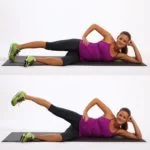
The straight leg raise is a great and effective or best exercise for hip bursitis, which will help in maintaining the strength and stability of side-to-side movement of the hips.
Start this exercise with the side-lying position on the mat or plinth on the left side of your body with the same hand extended for an increased balance of the body.
Then, raise your right leg upwards as much as you can for a greater range of motion before bringing it back to the starting position in a controlled movement. then hold the position or take a rest for a few seconds. then again start the same procedure.
Repeat this side leg raise 15-20 times. you should perform it three to four times each day.
Continue on the alternate side.
Clamshells
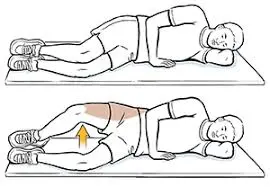
Clamshell exercises are also positive exercises for hip bursitis that will increase the strength of tone your inner thigh muscle and strengthen your hip muscles. This exercise is especially for runners.
you should take a side-lying position on the plinth or mat. one side of your body with your knees make an angle of forty-five degrees and one leg put on the other leg.
You can put your head on your lower arm with your hip bones stacked above one another.
This exercise engaged your navel to your spine with abdominal muscles.
Raise your top knee as much as you can while keeping a straight posture of your body and feet close to one another. you can perform this exercise with or without theraband. start this exercise without theraband and then you gain the normal strength of hip muscles you can start the clamshell exercise with theraband. Hold for 5-10 before returning to its original position.
Repeat the clamshell exercise 5-10 times. you should take 3 sessions of this exercise with 5-10 repetitions.
Leg Circles
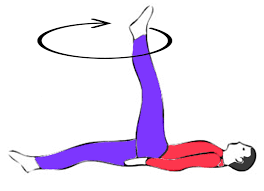
Leg circles are also great exercises for hip bursitis that will help increase the range of motion, maintain or increase strength, and increase the flexibility of hip muscles.
you can start with the supine position on the mat or plinth with your back flat and both legs straightened to the front.
Raise one leg off the surface of the mat or plinth a few inches, and while keeping it straight, start moving it in a circular motion. one circular motion for 3-4 seconds. the take rest.
then you can repeat on the opposite side. You can also perform leg circles and alternate both your legs. which is necessary.
Repeat the leg circles exercise 10 – 15 times. and take three sessions per day.
Hip extension in Prone
Hip extension exercises in a prone position can be beneficial for strengthening the hip muscles and promoting stability. Here’s how you can perform hip extension exercise in a prone position:
- Start by lying on your stomach (prone position) on a comfortable surface or exercise mat.
- Place your arms by your sides, palms facing down, for support and stability.
- Position your legs straight and in line with your body.
- Engage your core muscles by gently drawing your belly button towards your spine.
- Begin the exercise by slowly lifting one leg off the ground, focusing on using the muscles at the back of your hip (glutes and hamstrings) to lift the leg.
- As you lift the leg, keep your knee straight and avoid excessive arching of your lower back.
- Lift your leg to a comfortable height while maintaining control and proper form. You should feel a contraction in your glutes and hamstrings.
- Hold the lifted position for a brief pause (1-2 seconds) to further engage the hip muscles.
- Slowly lower your leg back down to the starting position in a controlled manner.
- Repeat the exercise with the other leg.
Hip Rotator Stretch
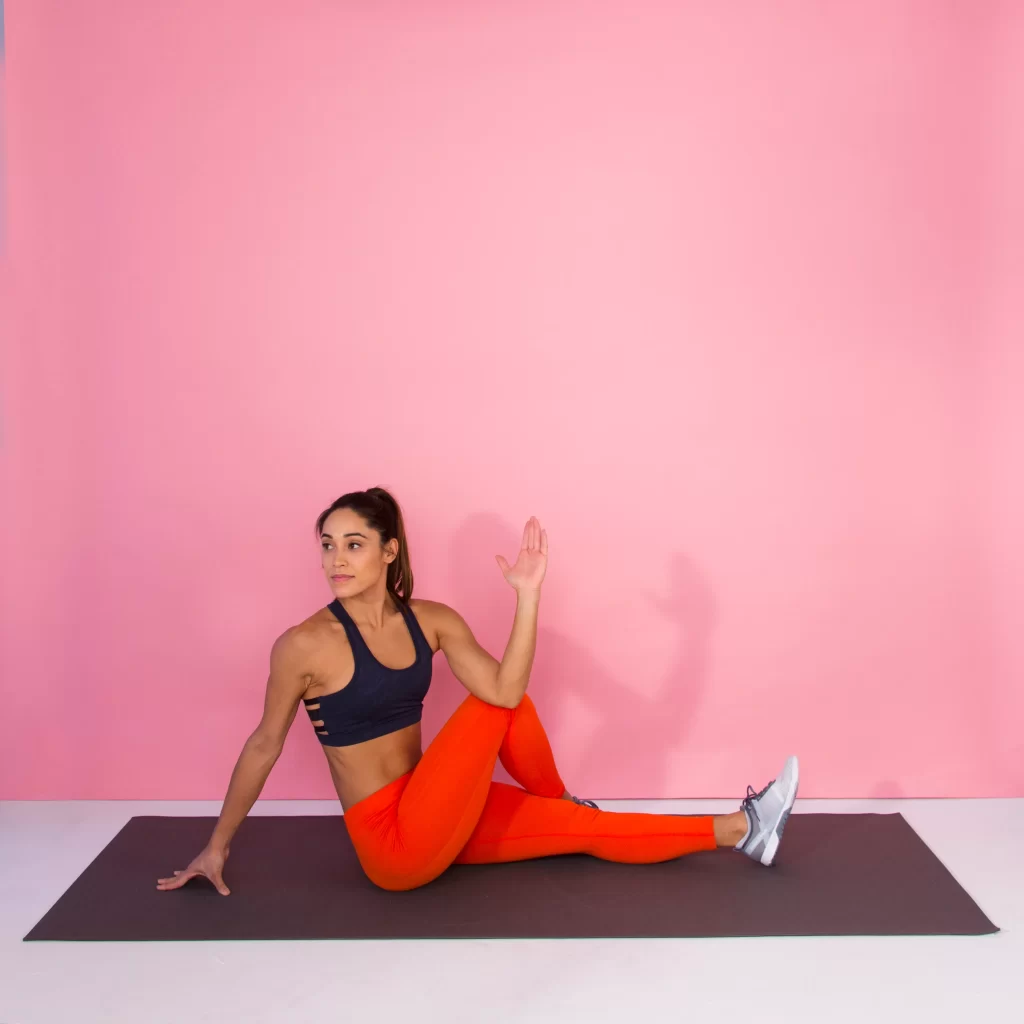
You can start with the supine position Lie on your back with both knees in flexion position and your feet flat on the surface.
Then Place the ankle of your affected leg and put on the unaffected leg on the thigh near your knee.
then you should through your hand and slowly push your knee away from your body until you feel a gentle stretch at the anterior part of your thigh
Hold the stretch for 15 to 30 seconds which is necessary.
Repeat this stretch three times. you can take 3 sessions per day with repetition.
you should feel a mild stretch during this exercise which indicates that you are performing the correct exercises.
Iliotibial Band (IT band) Stretch
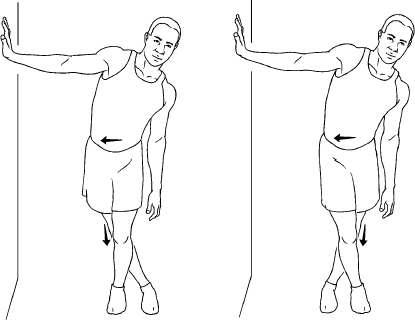
you can start with a Standing position with your affected hip against a wall. For support while, you can use a chair in front of your body.
Then cross your legs in a standing position and then put your weight on your affected hip and cross the other leg in front of it.
Then you should move your arm, on the same side as performed abduction movement of your shoulder, above your head.
Lean away on the unaffected side, and then your affected hip press against another side, unless you feel a gentle stretch on the outer border of your thigh which is necessary.
Hold the iliotibial stretch for 15 to 30 seconds which is necessary.
Repeat it three times and take 3 sessions of this stretch each day.
Straight leg raise

The straight leg raise exercise is great for maintaining the strength of your gluteus medius (gluteus medius is provide support to the outer part of the hip). Providing strength to this muscle can be a beneficial strategy for the treatment of trochanteric hip bursitis.
Begin with the supine lying position on your side with your painful hip up. Keep your hips together and do your upper leg straight.
Then Slowly lift your leg up, keeping it as straight as can you.
When you have lifted your leg up, hold it at the top for three to five seconds.
Slowly release back to the starting position.
Repeat the exercise 10 -15 times.
You can make the straight leg raise exercise by adding a piece of resistance equipment such as a weight cuff around your ankles.
Hip Bursitis Physical Therapy treatment
Common physical therapy management for hip bursitis includes:
Heat pack
Cryotherapy (Ice pack)
Ultrasound
Electrical stimulation
Massage
Manual stretching
Exercise for a range of motion and strength
Prevention
There are many strategies to prevent hip bursitis, including:
Doing stretches regularly with proper hold.
you should Perform exercises that provide strength to the hip joint 3-5 times a week
Performing physically active and fit
Maintaining low back muscles and spinal mobility and strength
If you start to feel your hip pain coming back, your healthcare may have you modify some of your activities.
A rest for days added with the right stretches of hip muscles and strengthening exercises for the hip joint can be enough to prevent hip bursitis.
Avoid exercise while Hip bursitis
Seven Exercises to Avoid with Hip Bursitis
Running. Running exercise is terrible for lots of people, but not for someone who has hip bursitis or who suffering from hip bursitis. only simply, running give terrible pressure on the hip joint, and when the bursa is already inflamed or suffering from hip bursitis, this is not a good thing for your hip bursitis condition.
Bicycling. The posture of the body when riding a bicycle put most of the weight directly onto the hip joint. The result is increased hip pain and becomes worsening hip bursitis. So all bicycling activity should be limited during the late stage of the recovery procedure and if you want the start this activity you should begin slowly and gently.
Deep Squats. Deep Squats exercises also require too much strength from the hip muscles. There is no other option to perform a deep squat without putting terrible pressure on the hip joints.
Leg Lifts. Leg lift exercises mostly perform in the gym such as activity straight leg lifts or side leg lifts, these exercises also require strong strength support from your hip muscles and give much weight to the hips. This needs to be avoided or stop if you are performing in those with hip bursitis.
Cardio Machines. Cardio machines such as treadmills, stair-climbers, and elliptical machines all require strengthful or strong hip muscles while exercising. All cardio machines included exercises to avoid hip bursitis.
Sideways Exercises. some exercises need a tilted posture of the body or tilting the body to the side such as walking or sitting need of tilting posture, hip bursitis will gradually worsen if you do not put your body’s posture straight.
Any Activity for Too Long. Some activity such as involves sitting, lying down, standing, positioning, and performing various beneficial exercises for hip bursitis condition, such as swimming (where water provides great resistance to your body which provides strength to your whole muscles. In most people with hip bursitis, we can see that the total lack of movement and repetitive movements for too long a time reason for worsened pain and disability of the hip joint.
Precautions while exercising
You should avoid doing exercise if you feel any discomfort during the exercise.
You should stop stepping (stair climbing) so that you can feel uncomfortable or pain in your groin.
You should stop jerky or trick hip movement during exercise.
You should Perform all exercises in a proper procedure, give proper stretches at the start of the exercise, give proper hold between the exercises, and give a proper repetition of each exercise.
You should wear comfortable or loose clothes while exercising which provide free movement during exercise your body becomes relaxed and you should avoid tight clothes or fashionable during exercise.
If you provide the stretch to the tight muscle of the hip joint if you can feel uncomfortable it’s okay and it is necessary but you should never feel stabbing pain and sharp pain during stretch or exercise which is not good and it also makes the condition worst.
You should never hold your breath during exercise. start of the exercise you should take deep breaths and slowly exhale at the end of the exercise through the mouth. when you hold your breath during exercise is developed tension in your muscle which result in high blood pressure.
If you have done a total hip replacement you should avoid internal rotation of the hip joint which is necessary and after the operation, you should put the pillow between the leg which maintains the normal hip position and doesn’t allow trick movement to the hip joint and prevent hip deformity.
You can add the strengthening exercises when you gain the normal range of the hip joint you can use the theraband or weight cuff.
FAQ
During medical treatment such as medication for pain and inflammation and steroid injections can be helpful, physical therapy or exercise is one of the great or important treatments for hip bursitis conditions. Many people can do exercises at home to prevent and cure the condition and also exercise can reduce the chances of hip bursitis.to help. and exercise can improve the strength and endurance around the hip joint.
The message that is successful in the treatment of non-specific hip pain is that it can decrease joint inflammation, increases the speed of the healing time of strained muscular tissue and ligaments, provide the relaxation of muscles, and increase blood circulation.
If your symptoms are the reason for overuse of the hip joint, limit such activity as walking, running, squatting, or whatever is aggravating your symptoms or pain of the hip joint. Deep Squats exercises can need or require too much from the hip joint. There is no option to perform a deep squat without putting pressure on the hips.
Bursitis is commonly seen in adults, especially after age 40. It is usually caused by repeated pressure on an area of the hip joint or by using a joint too much. Hip bursitis can affect anyone Male r female, but it is more commonly seen in women and middle-aged people or elderly people. It is less seen in younger people and in men. any hip injury during adult life caused by hip bursitis.
Bursitis is usually not a long-term condition it is a short-term condition that’s caused by overusing or giving excess pressure on a bursa around one of your hip joints. bursitis does not create long-lasting damage until you put continued pressure on the area. so as much as possible you should prevent the condition.
Symptoms of bursitis of the hip include joint pain and tenderness. You can also feel swelling around the hip joint and feel warmth around the affected area of the hip joint. The pain is becoming sharp during the first few days of this condition. It may be dull and achy later. You can feel pain after long periods of sitting and also reduce the movement of the hip.

